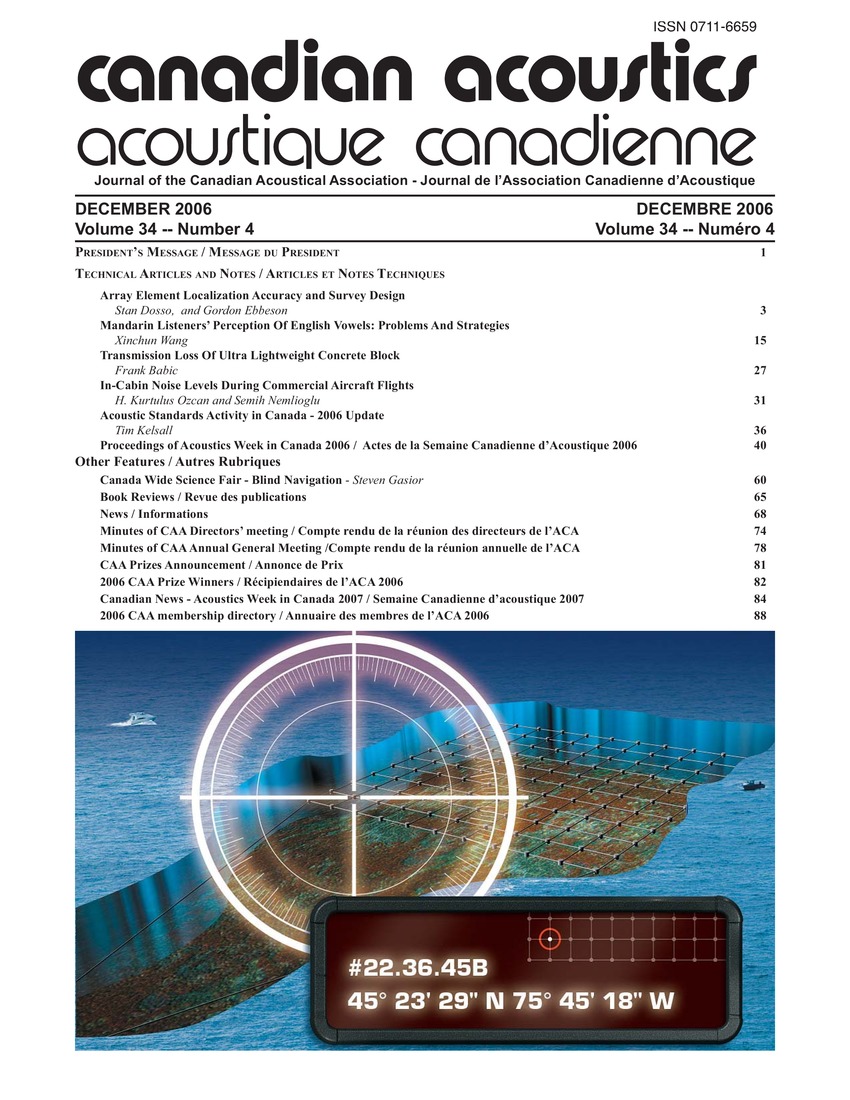High frequency acoustic channel estimation error analysis during the unet06 demonstrations
Keywords:
Acoustic devices, Acoustics, Error analysis, Function evaluation, Underwater acoustics, Acoustic response function, Kalman recursion, Noise varianceAbstract
The development of a computationally efficient high frequency acoustic channel estimator of the channel response function and error analysis during the UNET06 demonstrations was investigated. High frequency broadband channel probe experiments were conducted to characterize the underwater acoustic channel's problems with communications. The doubly spread acoustic channel was estimated from the recorded data sets by an augmented Kalman recursion. The Kalman recursion was augmented by an empirical Bayes approach with a point estimate of the innovation variance to improve estimation of the acoustic response function. The results show that the magnitude of the channel response function and a histogram measure difficulty of response estimation uncertainty relative to ambient noise variance. The results also show that the channel uncertainty is two times adverse to communications than the noise variance.Additional Files
Published
How to Cite
Issue
Section
License
Author Licensing Addendum
This Licensing Addendum ("Addendum") is entered into between the undersigned Author(s) and Canadian Acoustics journal published by the Canadian Acoustical Association (hereinafter referred to as the "Publisher"). The Author(s) and the Publisher agree as follows:
-
Retained Rights: The Author(s) retain(s) the following rights:
- The right to reproduce, distribute, and publicly display the Work on the Author's personal website or the website of the Author's institution.
- The right to use the Work in the Author's teaching activities and presentations.
- The right to include the Work in a compilation for the Author's personal use, not for sale.
-
Grant of License: The Author(s) grant(s) to the Publisher a worldwide exclusive license to publish, reproduce, distribute, and display the Work in Canadian Acoustics and any other formats and media deemed appropriate by the Publisher.
-
Attribution: The Publisher agrees to include proper attribution to the Author(s) in all publications and reproductions of the Work.
-
No Conflict: This Addendum is intended to be in harmony with, and not in conflict with, the terms and conditions of the original agreement entered into between the Author(s) and the Publisher.
-
Copyright Clause: Copyright on articles is held by the Author(s). The corresponding Author has the right to grant on behalf of all Authors and does grant on behalf of all Authors, a worldwide exclusive license to the Publisher and its licensees in perpetuity, in all forms, formats, and media (whether known now or created in the future), including but not limited to the rights to publish, reproduce, distribute, display, store, translate, create adaptations, reprints, include within collections, and create summaries, extracts, and/or abstracts of the Contribution.


